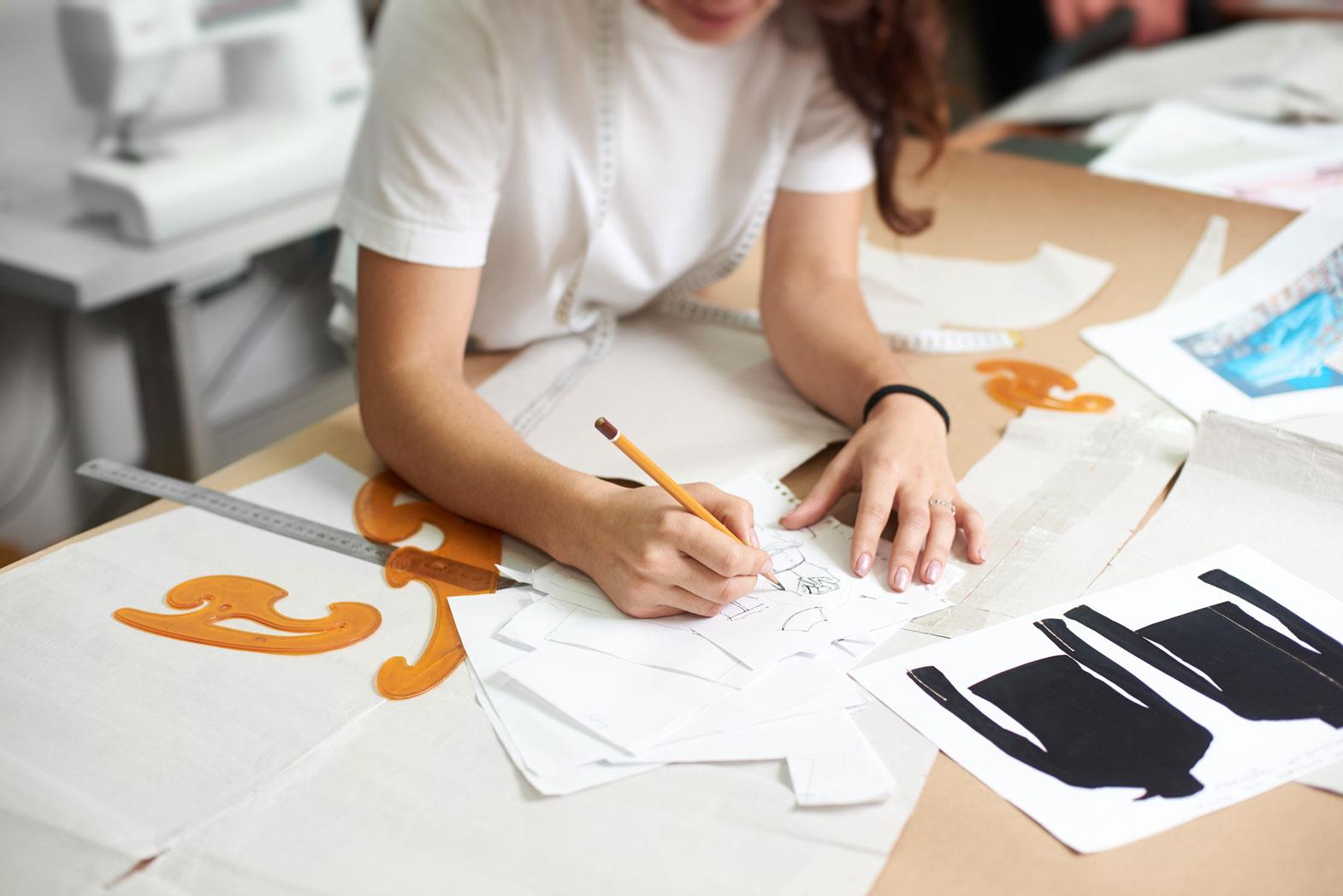Once yarns are made up of natural or man-made fibers, a fabric is woven or knitted. Besides color or texture, prints are something that breathe life into these fabrics and make them visually appealing. The quality of a fabric and the prints decide the destiny of a fabric. Fabrics are used in the apparel industry to manufacture clothes and accessories, for domestic purposes like tablecloths, bedspreads, curtains, towels, cushion covers, and for home decor in the form of upholsteries and furnishings. Hence, prints play an important role in selecting a fabric. This is where a textile or fabric designer comes into the scene.
Textile designers drive the process of creating designs for knitted, woven, and mixed fabrics. Designers require producing designs, keeping in mind the type of fabric and its use. The designs can be for a body or a certain space. "Body" deals with fabric designing for fashion, clothing, and accessories; whereas "space" refers to textile designing for interiors, furnishings, and the environment. Hence one needs to have a sound knowledge of present trends, colors, and contemporary designs to be a good textile designer. Designers also need to possess familiarity with which pattern works well with what kind of fabric. Their job requires them to do research on different fabrics and comprehend various dye compositions. They also tend to expertise in either knitted, woven, or mixed fabrics.
Textile designers are vital for pushing the design process forward. To begin with, designers need to meet the clients for whom the fabric is to be designed. Preparing mood boards, portfolios of designs and concepts, and a verbal presentation to demonstrate their artwork to potential clients encompasses one of their wide ranges of roles. After the designs are approved, the designer has to be around to solve and assist in the printing process of the garments. Textile designers may work in teams or in standalone studios.
Traditionally, textile designers dealt only with colors, patterns, and material aesthetics. But nowadays, designers are involved from the start to finish of the fabric designing process. These days, textile designers are indulging in the sourcing, trend forecasting, marketing, and even branding of fabrics. With new opportunities available, textile designers also work as freelancers, besides the conventional in-house design facilitators. The freelancing option has given rise to many young and dynamic textile artists to explore this genre and work at their convenience, at the same time sell their designs or offer designing services to a brand or company on commission.
Computer aided Designing (CAD) has also opened ample amount of avenues for textile designers. A lot of CAD agencies recruit textile designers, where technology is used as a medium to convert design ideas on fabrics. This has also led to a market for independent designers, who can source designs sitting anywhere in the world, and sell designs and their art work to clients or brands. Thanks to social media and e-commerce, the web is flooded with textile designing websites, where one can sell or buy designs. This means designers now have the fair shake to invent a design or print and sell the templates at a price.
The recent trend of working and independent conceptualizing of designs in fabrics has given birth to textile art or textile craft. Just like, other art forms, this gives designers an opportunity to display their creativity and share their ideas in textile or art studios. These materials are hand crafted, painted, or dyed. They are used in high-fashion garments, as art pieces, and in home furnishings. The fabrics developed by textile artists are limited edition items. Hence this is another lucrative and niche market textile designers can explore.
However, whether one chooses to be an in-house textile designer at a large company or for a brand, or a freelance textile designer, both in recent times will be facing new challenges. Adapting to changing customer needs, latest technologies, providing timely outputs, and understanding market demands are some mundane responsibilities of a fabric designer. But owing to increasing environmental issues and hue and cry for sustainability, pose new demands for designers to lock horns with. Using ethical policies and sourcing, biodegradable designs, and sustainable techniques have made textile designer's job more thrilling than ever.
To conclude the world of textile designing is not just limited to creating patterns and colors for fabrics anymore, a designer can now specialize in color, computer designs, creating single templates like pictures, even slogans, and textile art; be a designer for a large company or consider freelancing, the options are wide as the sky.
Reference:
1. Cornell.edu
2. Schoolintheusa.com
3. Safaribooksonline.com









Comments